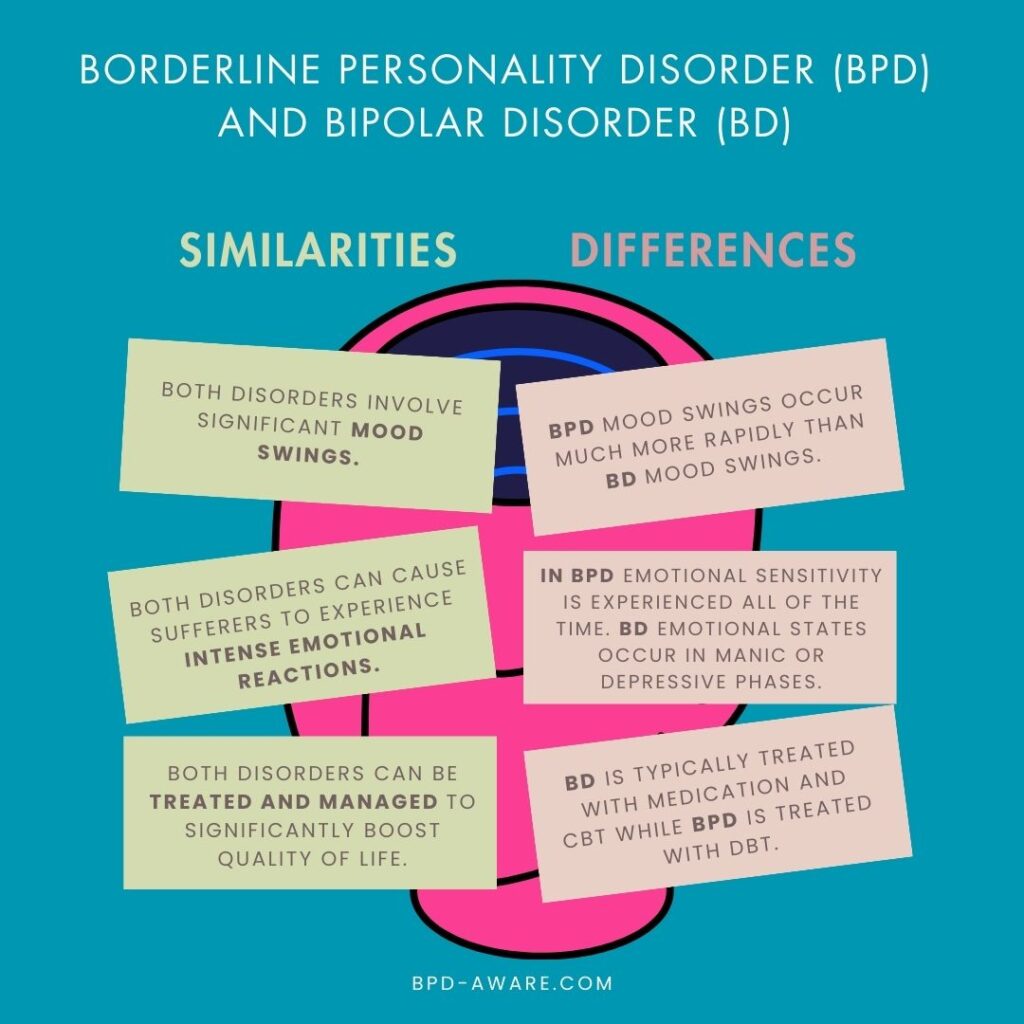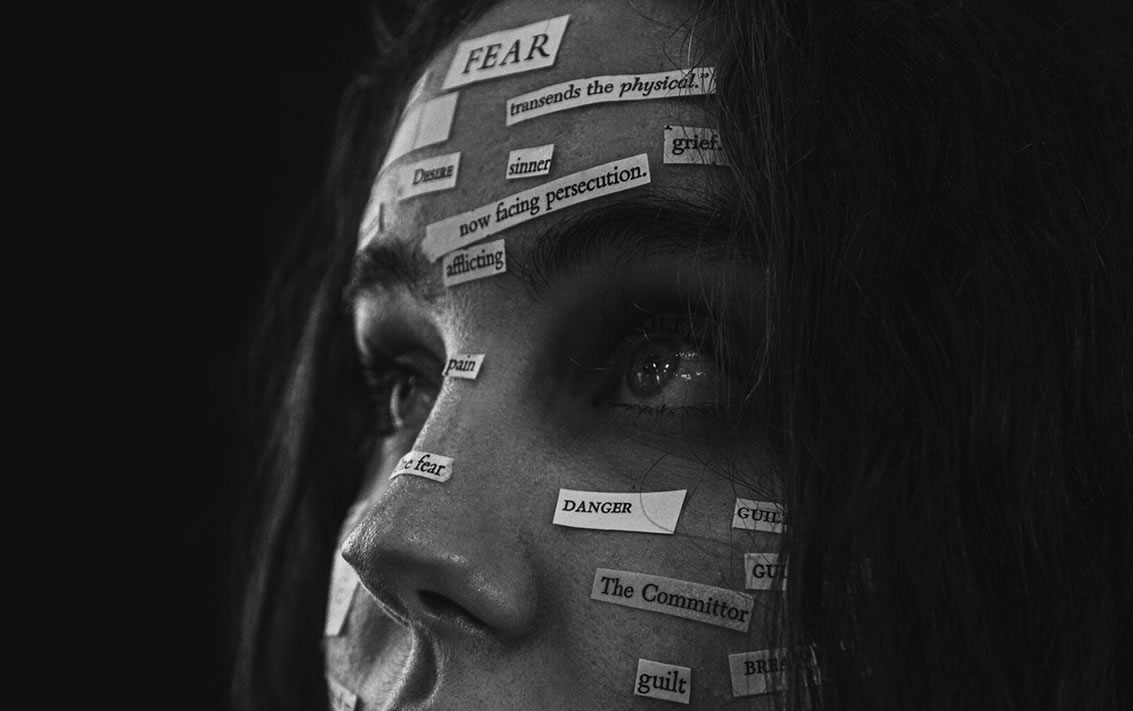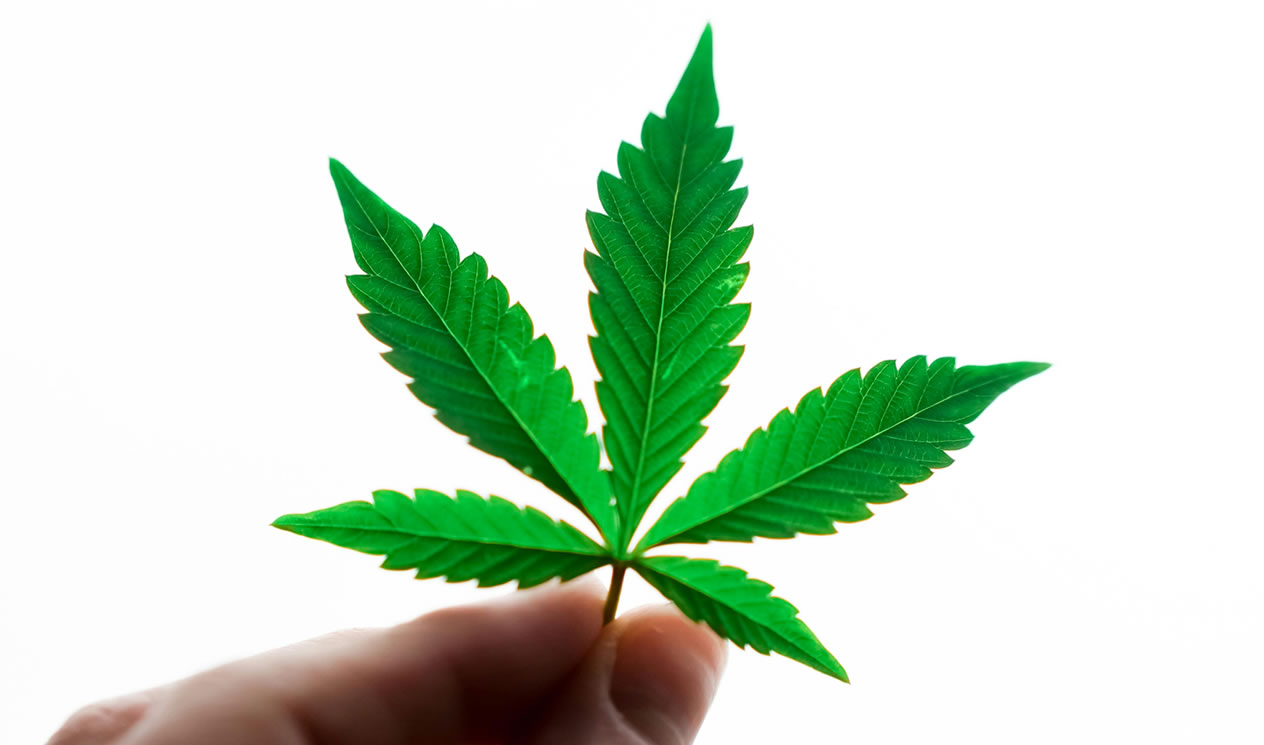Borderline Personality Disorder (BPD) and Bipolar Disorder (BP) are two complex mental health conditions that often get mistaken for one another due to their overlapping symptoms and similar acronyms.
However, while they share certain characteristics, they are distinctly different conditions with their own unique challenges and treatment approaches. This article aims to explain Borderline Personality Disorder and Bipolar Disorder; highlighting both their similarities and differences, and emphasizing the importance of accurate diagnosis and properly tailored treatment.
What is Borderline Personality Disorder?
Borderline Personality Disorder is a mental health disorder characterized by an intense fear of abandonment, a pattern of instability within personal relationships, emotions, and self-image, as well as marked impulsivity. People with BPD may experience intense episodes of rage, depression, and anxiety that can last between a few hours to days.
What is Bipolar Disorder?
Bipolar Disorder, on the other hand, is primarily a mood disorder. It involves significant shifts in mood, energy, and activity levels, ranging from manic highs to depressive lows. These mood episodes can last longer than the average BPD episode, and can last for days, weeks, or even months.
How Borderline Personality Disorder and Bipolar Disorder Are Similar
Both disorders involve significant mood swings. Mood swings can manifest as rapid shifts from happiness to sadness, irritability, or anger. They may also involve changes in energy levels, sleep patterns, and appetite. Severe mood swings can interfere with relationships, work, and daily functioning. They can lead to social withdrawal, conflict in relationships, and decreased productivity.
Individuals with BPD or Bipolar Disorder may exhibit high levels of impulsive behavior, engaging in risky, reckless, or self-damaging activities. This impulsiveness can have significant consequences on their personal and professional lives. Examples of impulsive behavior include substance abuse, dangerous driving, gambling, unsafe sexual behavior, making large unplanned purchases, or quitting a job without a backup plan.
Both BPD and BD often experience intense emotions. People with BPD often experience heightened emotional sensitivity and reactivity, while those with Bipolar Disorder may exhibit intense emotional states during their manic or depressive phases.
Maintaining stable relationships can be difficult for people with either BPD or Bipolar Disorder. The fluctuating moods and behaviors associated with these disorders can strain personal relationships.
There is an increased likelihood of self-harm and suicidal tendencies in those with Borderline Personality Disorder or Bipolar Disorder, often stemming from emotional turmoil and impulsiveness.
The Key Differences Between BPD and Bipolar Disorder
While the similarities are notable, it’s essential to recognize the fundamental differences between Borderline Personality Disorder and Bipolar Disorder.
In BD mood episodes can occur independently of external events and last for extended periods. In contrast, BPD mood swings are often rapid and usually triggered by interpersonal conflicts or perceived rejections.
Someone with Borderline Personality Disorder may experience several ups and downs over just one day while someone with Bipolar Disorder is on either a high or a low for the full duration of the day. Bipolar mood episodes typically last for weeks or months. In BPD, mood shifts are shorter, often occurring over hours or days. To put it into a sporting parlance, BPD mood shifts are more like sprints while Bipolar episodes are more like marathons.
There tend to be many more symptoms associated with Borderline Personality Disorder than Bipolar Disorder. BPD’s core feature is instability in relationships, self-image, and emotion. Bipolar Disorder, however, is defined by alternating episodes of mania and depression.

The Importance of Accurate Diagnosis
Distinguishing between BPD and Bipolar Disorder is crucial for several reasons.
The treatment approaches for BPD and Bipolar Disorder differ significantly. Bipolar Disorder is often managed with medications like mood stabilizers, while BPD treatment focuses more on psychotherapy, such as Dialectical Behavior Therapy (DBT).
Receiving the wrong diagnosis (and by extent, the wrong treatment) can do more harm than good in terms of the mental health of the patient as their actual needs are not being tended to. Beyond the possible harm this causes, there is also a significant loss of time, money, and possibly trust in the mental health services available.
Just imagine for a moment that you have cancer in your spine but your doctor keeps on insisting that you have sciatica. The time wasted on that improper diagnosis could very well cost you your life and it’s no less true of someone and their mental health.
Living with BPD or Bipolar Disorder
Living with either BPD or Bipolar Disorder can be immensely challenging. The person with BPD or BD must build a strong support network of friends and family who are willing to educate themselves about the condition and understand the challenges.
In both cases, therapy and medication can provide a huge help in living a fulfilling and more stable life.
For Bipolar Disorder, CBT and mood stabilizers are the most common combination of therapy and medication to improve the condition while DBT is considered the best therapy to treat Borderline Personality and medication can vary between mood stabilizers, anti-depressants, anti-psychotics, and anti-anxiety drugs, depending on the specific needs of the patient.
Borderpolar
It would be remiss to write an article about Borderline Personality Disorder and Bipolar Disorder and not mention the fact that it’s entirely possible to suffer from BPD and BD at the same time. This is often referred to as Borderpolar.
Borderpolar itself is not an official diagnosis but is merely used as shorthand for people who have both BPD and BD.
It’s estimated that 20% of people with Borderline Personality Disorder also have Bipolar Disorder, according to research by Mark Zimmerman MD, and Theresa A. Morgan, PhD.
Because BPD and BD share so many symptoms, it’s unusual for someone to be diagnosed with both at the same time. Often an individual who’s suffering from both disorders will be diagnosed with one before the other (typically Bipolar Disorder is diagnosed first). Only after undergoing treatment for one does the presence of the other become more obvious.
They are then treated as separate issues.
Final Thoughts
Borderline Personality Disorder and Bipolar Disorder, while similar in some respects, are distinct conditions that require different treatment approaches. Recognizing these similarities and differences is vital for healthcare professionals, patients, and their support networks. With proper diagnosis and tailored treatment plans, individuals with BPD or Bipolar Disorder can manage their symptoms and enjoy a much better quality of life.
When we take the time to learn more about personality disorders and mental health conditions – even those that might not directly affect us right now – we are taking an important step to removing the stigma behind these conditions. Whether you have these issues in your life or not, it should always be a goal to learn more so that you can better help and understand those who need it.
If you have any experiences with Borderline Personality and/or Bipolar Disorder that you’d like to share or have questions you’d like to ask, we’d love to hear from you in the comment form below.
Sources, Resources, and Further Reading
- Borderpolar: A Diagnostic Whiplash: https://www.psychologytoday.com/us/blog/the-psyche-pulse/202409/borderpolar-a-diagnostic-whiplash
- Bipolar Disorder vs. BPD: What Are the Differences?: https://www.verywellmind.com/bipolar-and-borderline-personality-disorder-425418
- Is ‘Borderpolar’ a Real Diagnosis?: https://www.everydayhealth.com/emotional-health/is-borderpolar-a-real-diagnosis/
- Bipolar Disorder vs. Borderline Personality Disorder: https://www.healthline.com/health/your-faqs-answered-bipolar-disorder-vs-borderline-personality-disorder
















